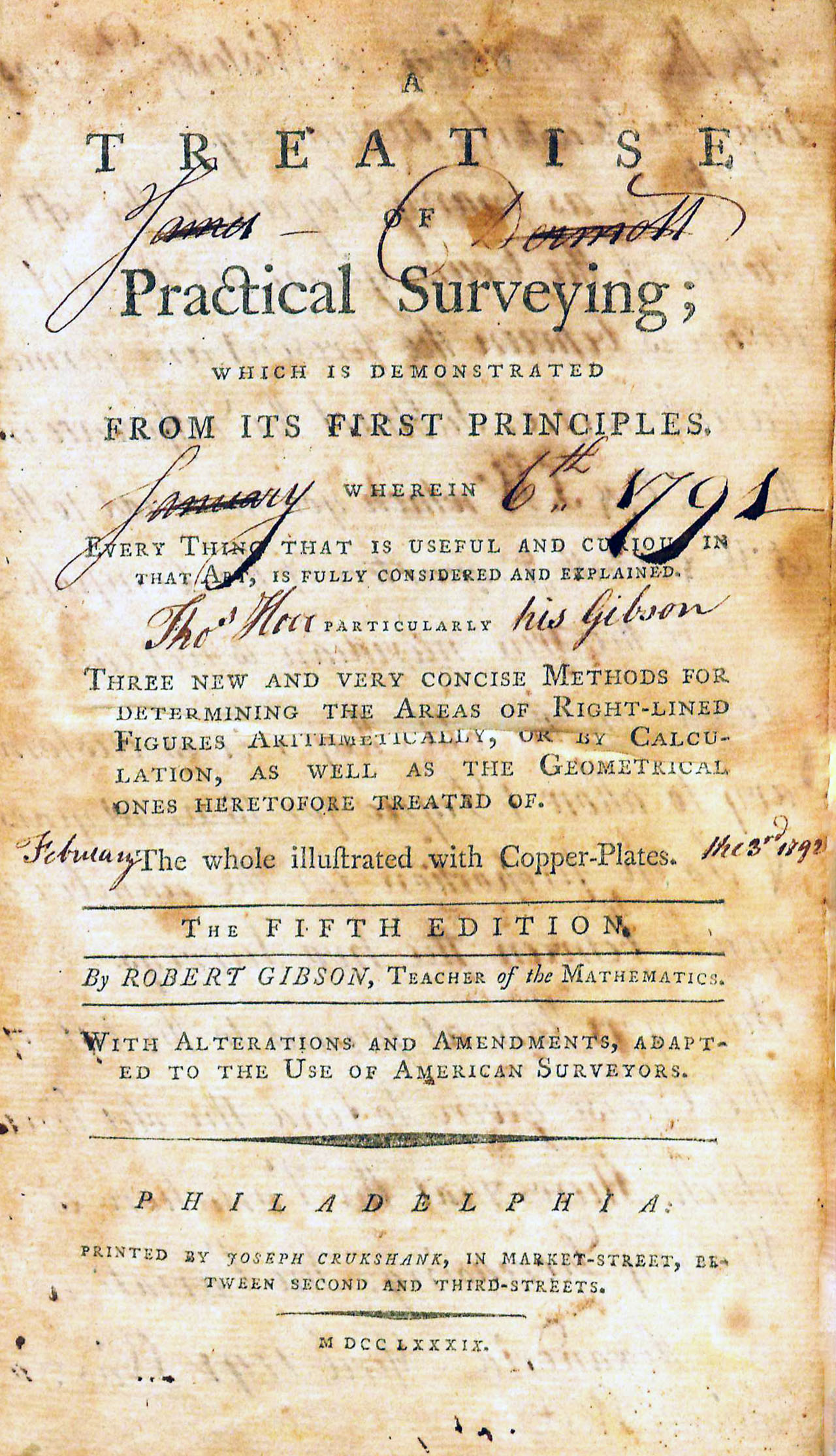''A Treatise Of Practical Surveying
by Robert Gibson
| A Treatise Of Practical Surveying: Which is Demonstrated From its First Principles Wherein Every Thing That is Useful and Curious in that Art, is Fully Considered and Explained. | |
|
Title page from A Treatise Of Practical Surveying: Which is Demonstrated From its First Principles Wherein Every Thing That is Useful and Curious in that Art, is Fully Considered and Explained., George Wythe Collection, Wolf Law Library, College of William & Mary. | |
| Author | Robert Gibson |
| Published | Philadelphia: Printed by Joseph Crukshank . . . |
| Date | 1789 |
| Edition | Fifth |
| Language | English |
| Pages | viii, 272, [1], 90 p., [12] pages. |
In the late eighteenth century the rapid progression of development into areas of the United States that were previously unsettled created a heightened need for accurate and consistent techniques to measure property rights and settle disputes that may arise out of infringement of those rights. A Treatise of Practical Surveying: Which is Demonstrated from its First Principles; Wherein Every Thing That is Useful and Curious in that Art, is Fully Considered and Explained… was authored by Robert Gibson to standardize the process by providing surveyors with a definitive guide to surveying property. Gibson’s work contains extensive coverage of the geometric principles involved in surveying property as well as details on the different surveying methods that may be employed by a surveyor.[1]
Evidence for Inclusion in Wythe's Library
Description of the Wolf Law Library's copy
Bound in contemporary calf with leather spine label. Purchased from Bartleby's Books.
Find this book in William & Mary's online catalog.
References
- ↑ Robert Gibson, and James Poupard. A Treatise of Practical Surveying Which is Demonstrated from Its First Principles. Wherein Every Thing that is Useful and Curious in that Art, is Fully Considered and Explained. Particularly Three New and Very Concise Methods for Determining the Areas of. The 5th ed. (Philadelphia: Printed by Joseph Crukshank, in Market-Street, between Second and Third-Streets., 1790.)
